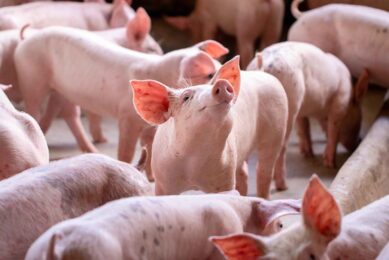Paving the way for a broad protection against PRRS

Interview with Prof Dr Jane Christopher-Hennings: Prof Christopher-Hennings has been on top of PRRS from the first moment the disease became a threat to the pig industry. At the Congress, she will give a historical analysis of progress made in applied PRRS research in pigs.
It may be hard to believe, but two decades ago, in 1990, nobody knew what to think of the new phenomenon causing blue ears in sows, causing reproductive and respiratory problems in pigs and also widespread mortality. In these very first years, a young post-doctoral student focused on the ‘Mystery Swine Disease’ – and was involved in the first steps in determining the etiology of the disease in the US.
The disease grabbed her, and now, at South Dakota State University (SDSU), Prof Dr Christopher-Hennings has grown to be one of the world’s leading authorities when it comes down to research into the pig disease that has dominated the pig veterinary world for quite some years: PRRS. At the IPVS congress in Vancouver, Christopher-Hennings will enlighten the scientific audience about the progress made in research towards PRRS, from 1990 until the present day. At South Dakota State University, together with fellow research colleagues Dr Ying Fang and Dr Eric Nelson, she’s had her role in developing methods to find new scientific approaches to better detect and control the disease.
“We first developed a nested polymerase chain reaction (PCR) test for use as a sensitive tool to detect the virus in boar semen in the early 1990s. Since then we have developed a real-time, quantitative PCR test, which can be used on serum, tissues, semen, oral fluids and blood swabs. This is a commercially available test and was, at the time, a first for the North American market and has been available since 2003. It has been a very sensitive tool to detect and quantitate the virus.” One of the first applications of the PCR test was found in boar semen, Christopher-Hennings explains. Although present in a multitude of pig tissues, like lymph nodes, tonsils and lung, PRRS virus has been found to be present in semen. Questions could be answered as to how long the virus can survive there – and whether it can be transmitted through boar semen. Both questions led to positive answers, which in turn paved the way into further research as to what limits or encourages PRRSV presence.
Vaccine use
At the moment, PRRS can be controlled by using vaccines, but finding more permanent solutions is what creates the real challenge. “The modified live vaccines have been successful in certain cases,” she says. Mutations, however, can change that picture – the rapid spread of High Pathogenic PRRS in China and South East Asia could be an example. “We need to be defining a vaccine that can protect very broadly.” She says, “It would be difficult to define what type of vaccine will work the best for broad reactivity to multiple PRRSV strains. This is why it is important for groups around the world to work on several different strategies (eg. infectious clones, DNA based vaccines, subunit vaccines, modified-live etc.).” These can then be coupled with proven biosecurity protocols.
Secondly, she says, the search continues to develop a marker vaccine. “These are used to differentiate vaccinated from wild-type virus infected animals in disease elimination programmes.
An associated diagnostic test is then used to differentiate these two populations. How these populations would then be handled in an infection situation would need to be decided by the parties involved, but may involve quarantine or removal or further vaccination, e.g. of surrounding pigs that are found to be susceptible.” SDSU endorses various researches into the PRRS field, she tells. A completely different approach, in combination with agricultural engineers, focuses on the use of biofilters in limiting infectious agents going out of a barn, and thus reduce the level of PRRS spread. Developments have not been stopped when PCV2 took over from PRRS receiving the most attention. She says, “On the contrary – some of the diagnostics and assets discovered for PCV2 can definitely be applicable for PRRS. We
are also working on a ‘multiplex’ test that could even detect multiple infectious agents simultaneously such as PRRSV, PCV2 and swine influenza.











